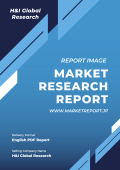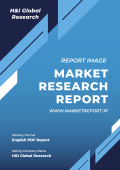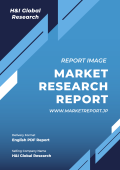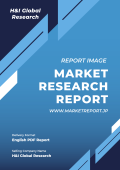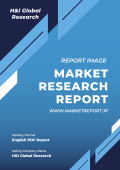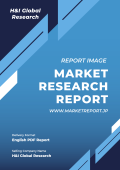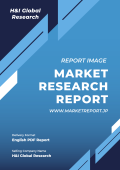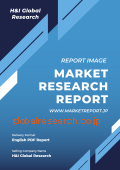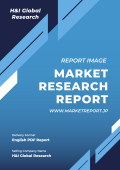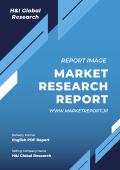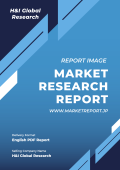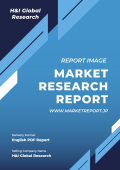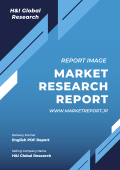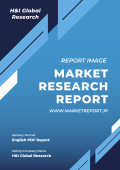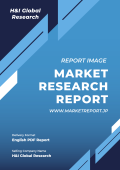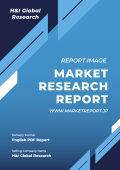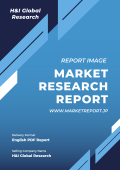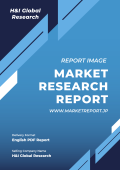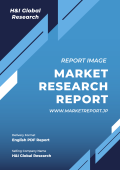| ■ 英語タイトル:Satellite Payload Market Report by Type (Minisatellite, Microsatellite, Nanosatellite, and Others), Orbit (Low Earth Orbit (LEO), Medium Earth Orbit (MEO), Geostationary Earth Orbit (GEO), Beyond Geosynchronous Orbit), Frequency Band (C, K/KU/KA Band, S and L Band, X Band, VHF and UHF Band, and Others), Application (Earth Observation and Remote Sensing, Satellite Communication, Science and Exploration, Mapping and Navigation, Space Observation, and Others), End User (Commercial, Academic, Government and Military, and Others), and Region 2025-2033
|
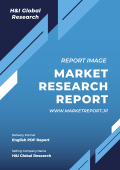 | ■ 発行会社/調査会社:IMARC
■ 商品コード:IMA25FR0222
■ 発行日:2025年1月
■ 調査対象地域:グローバル
■ 産業分野:航空宇宙&防衛
■ ページ数:136
■ レポート言語:英語
■ レポート形式:PDF
■ 納品方式:Eメール
|
■ 販売価格オプション
(消費税別)
※販売価格オプションの説明はこちらで、ご購入に関する詳細案内はご利用ガイドでご確認いただけます。
※お支払金額は「換算金額(日本円)+消費税+配送料(Eメール納品は無料)」です。
※Eメールによる納品の場合、通常ご注文当日~2日以内に納品致します。
※レポート納品後、納品日+5日以内に請求書を発行・送付致します。(請求書発行日より2ヶ月以内の銀行振込条件、カード払いも可能)
※IMARC社の概要及び新刊レポートはこちらでご確認いただけます。
| ★グローバルリサーチ資料[衛星ペイロードの世界市場(2025-2033):小型衛星、超小型衛星、超小型衛星、その他]についてメールでお問い合わせはこちら
|
*** レポート概要(サマリー)***
世界の衛星ペイロード市場規模は2024年に186億米ドルに達しました。今後、IMARC Groupは、2033年までに市場規模が291億米ドルに達し、2025年から2033年の年間平均成長率(CAGR)は5.07%になると予測しています。5Gの統合の増加、再生可能エネルギー源のモニタリングにおける製品使用の増加、デジタル農業の成長、災害管理および緊急対応システムに対する製品需要の高まり、そして台頭しつつある宇宙観光産業は、市場を推進する要因の一部です。
衛星ペイロードは、衛星システム内の不可欠なコンポーネントであり、軌道上で重要な機能を果たします。衛星が宇宙空間にある間、これらのペイロードは通信機能を担い、共有電源やトランスポンダーと連携しながら、独立した通信回路や運用システムを維持します。 ペイロードは多用途であり、キューブサット、小型、中型、大型衛星など、さまざまなサイズの衛星に搭載されています。 アンテナ、カメラ、熱赤外分光計、測光器、トランスポンダー、リピータなど、さまざまな機器が搭載されています。これらのペイロードは、ナビゲーション、通信、リモートセンシング、宇宙探査、画像処理において重要な役割を果たしています。これらのペイロードによって収集されたデータは、さらなる分析と処理のために地上の受信機に送信されます。また、場合によっては、ペイロードに貨物、乗客、乗務員、弾薬、または研究や実験用の科学機器が搭載されることもあり、衛星ミッションにおける多面的な有用性を示しています。
世界市場は、宇宙探査イニシアティブの増加によって主に牽引されています。これに伴い、スモールサットやキューブサットを含む衛星の成長がペイロードコンポーネントの需要を促進しています。さらに、世界的なインターネット接続の需要の高まりが通信衛星ペイロードの展開を推進しています。これとは別に、これらのペイロードは、気象モニタリングや災害管理アプリケーションのための地球観測において重要な役割を果たしています。さらに、防衛機関は安全な通信、監視、偵察に衛星ペイロードを使用しており、これが市場を促進しています。これらのペイロードは、作物のモニタリングと管理データを提供することで精密農業を支援しており、これが市場を推進しています。また、ペイロードは気候変動や自然災害に関するデータを収集することで環境モニタリングに貢献しており、これが市場を後押ししています。小型化の進歩により、小型およびCubeSatミッションにおいて、より小型で費用対効果の高いペイロードが可能になっています。さらに、商業衛星オペレーターの艦隊の拡大により、ペイロードの需要も増加しています。
衛星ペイロード市場の動向/推進要因:
世界的な航空宇宙産業の著しい成長
世界的な航空宇宙産業の著しい成長は、市場に好影響を与えています。航空宇宙分野が通信、地球観測、ナビゲーション、科学研究のための衛星展開の増加など、堅調な発展を遂げるにつれ、先進的で革新的な衛星ペイロードの需要が高まっています。衛星は航空宇宙産業の用途において不可欠であり、通信、監視、データ収集、宇宙探査を促進します。さらに、衛星群や宇宙旅行事業などの民間宇宙開発企業やイニシアティブの出現により、衛星ペイロードのニーズが高まっています。航空宇宙産業の拡大は、信頼性の高い衛星ベースのソリューションの重要性を強調し、現在進行中の研究開発努力を推進し、より洗練された効率的なペイロード技術につながります。その結果、航空宇宙産業と衛星ペイロード部門の共生関係が市場の成長を促進し、相互接続が進む世界において、より高度な接続性、データ処理能力、科学的探査や商業利用の機会を提供しています。
低軌道(LEO)をベースとした地球観測画像ペイロードに対する需要の高まり
低軌道(LEO)をベースとした地球観測画像ペイロードに対する需要の高まりが市場を後押ししています。地球規模のブロードバンドインターネットの普及やリモートセンシングなどの用途に牽引され、LEO衛星の利用が拡大を続ける中、高解像度の地球画像を撮影する先進的なペイロードに対するニーズが高まっています。 地球観測ペイロードは、環境モニタリング、災害管理、農業、都市計画など、複数の重要な機能を実現します。 さらに、農業、林業、インフラ開発などの産業用に、リアルタイムの高品質衛星画像に対する需要も高まっています。小型衛星群の進歩も、この需要に貢献しています。小型衛星群には、膨大な量の地球データを収集し、送信できるコンパクトで効率的なペイロードが必要だからです。この傾向は、ペイロード技術の革新を促すだけでなく、衛星産業におけるパートナーシップや投資を促進し、最終的には市場の成長を促し、世界中のさまざまな用途に適時かつ正確な地球観測データの利用を確保することにつながります。
宇宙技術分野における研究開発(R&D)活動の活発化
宇宙技術における研究開発(R&D)活動の活発化は、市場の成長を促進しています。官民の組織が主導する研究開発(R&D)への取り組みの強化は、衛星ペイロードの設計、機能、性能の向上を推進しました。こうした取り組みは、通信や地球観測から科学研究や宇宙探査まで、幅広い用途に対応できる、より効率的で洗練された多用途ペイロードの開発につながっています。宇宙技術分野における小型化、人工知能、先進材料などの最先端技術の追求は、ペイロードの革新に直接的な影響を与えます。さらに、宇宙機関、学術機関、民間宇宙企業間の協力関係が深まることで、知識の共有が促進され、画期的なペイロードソリューションの開発が加速されます。宇宙技術は、広範な研究開発投資によって進化を続けており、衛星ペイロード市場は、機能、信頼性、適応性の向上により、世界中で高まる宇宙ベースのサービスやアプリケーションへの需要に応えることができます。
衛星ペイロード産業のセグメント化:
IMARC Groupは、世界の衛星ペイロード市場レポートの各セグメントにおける主要なトレンドの分析を提供しています。また、2025年から2033年までの世界、地域、国レベルでの予測も行っています。当社のレポートでは、種類、軌道、周波数帯、用途、エンドユーザーに基づいて市場を分類しています。
種類別内訳:
ミニ衛星
マイクロ衛星
ナノ衛星
その他
ナノ衛星が市場を独占
本レポートでは、種類別に市場の詳細な内訳と分析を提供しています。これには、超小型衛星、小型衛星、超小型衛星、その他が含まれます。レポートによると、超小型衛星が最大のセグメントを占めています。
小型で軽量という特徴を持つナノ衛星は、地球観測から通信、科学研究まで、さまざまな用途にコスト効率の高いソリューションとして登場しています。 これらの小型で高性能な衛星は、その機能を最大限に引き出すために先進的なペイロード技術に依存しており、商業および科学ミッションでますます人気が高まっています。 グローバルな接続性と地球の監視のために展開されるナノ衛星群への関心の高まりは、データを効率的に取得し伝送するよう設計された革新的なペイロードの需要を後押ししています。
さらに、新たなニーズに迅速に対応できるという利点から、衛星ペイロード分野における技術の急速な進歩が促されています。この分野が宇宙へのアクセスを民主化し、価値あるデータサービスを提供できる能力は、衛星ペイロード市場全体の拡大に大きく貢献し、世界規模での接続性、データ分析、科学的洞察の向上が期待されます。
軌道別内訳:
低軌道(LEO)
中軌道(MEO)
静止軌道(GEO)
静止軌道外
低軌道(LEO)が市場を独占
このレポートでは、軌道別に市場を詳細に分類し、分析しています。これには、低軌道(LEO)、中軌道(MEO)、静止軌道(GEO)、静止軌道外が含まれます。この報告書によると、低軌道(LEO)が最大のセグメントを占めています。
地球に比較的近い距離に位置するLEO衛星は、グローバルなインターネットの普及、地球観測、リモートセンシングなど、さまざまな用途で重要な役割を果たしています。このセグメントは、いくつかの理由により市場拡大を牽引しています。まず、多数の衛星で構成されるLEO衛星群では、データ収集と通信を最適化するために、効率的で軽量かつ高性能なペイロードが求められます。
第二に、リアルタイムのデータと接続に対する需要が、LEO衛星ペイロードの革新を促進しています。これらの衛星は、低遅延での高速インターネットアクセスや地球画像の配信に適しているためです。さらに、LEO衛星の打ち上げコストの低下も、その普及に貢献しており、先進的なペイロード技術への投資を誘引しています。その結果、LEOセグメントは衛星ペイロード市場の成長の最前線にあり、強化されたグローバルな接続性、高速データ伝送、革新的な地球観測能力を提供しています。
周波数帯域別:
C、K/KU/KA帯
SおよびL帯
X帯
VHFおよびUHF帯
その他
本レポートでは、周波数帯域別に市場を詳細に分類し、分析しています。これには、C、K/KU/KA帯、SおよびL帯、X帯、VHFおよびUHF帯、その他が含まれます。
C、K/KU/KAバンドは衛星通信に不可欠であり、ブロードバンドインターネット、テレビ放送、軍事通信サービスを提供しています。高速データ通信とグローバルな接続に対する需要は、特に商業分野において増加し続けています。これらの帯域で動作する革新的なペイロードは、これらのニーズに効率的に対応するために不可欠です。さらに、軍事および防衛産業は安全な通信システムに依存しており、これらの帯域における先進的なペイロードの需要を押し上げています。
さらに、SバンドおよびLバンドは、リモートセンシング、地球観測、科学研究など、さまざまな分野で応用されています。地球の監視、環境研究、災害管理は、貴重なデータを収集するために、これらの帯域で動作するペイロードに大きく依存しています。宇宙探査や天文学などの科学ミッションは、データ伝送や通信にSバンドおよびLバンドのペイロードに依存しています。これらの応用分野の継続的な拡大は、ペイロード技術の開発を促進し、市場の成長を促しています。
用途別内訳:
地球観測およびリモートセンシング
衛星通信
科学および探査
マッピングおよびナビゲーション
宇宙観測
その他
衛星通信が市場を独占
このレポートでは、用途別に市場を詳細に分類し、分析しています。これには、地球観測およびリモートセンシング、衛星通信、科学および探査、マッピングおよびナビゲーション、宇宙観測、その他が含まれます。レポートによると、衛星通信が最大のセグメントを占めています。
衛星通信の用途には、ブロードバンドインターネットの提供、テレビ放送、軍事通信のセキュリティ、海上および航空の接続、災害対応通信など、さまざまなサービスが含まれます。この幅広い用途により、多様な通信ニーズに対応する先進的で多用途の衛星ペイロードに対する需要が高まっています。特に遠隔地やサービスが行き届いていない地域におけるグローバルな接続性のニーズがますます高まっていることから、データ伝送の効率性とカバー範囲を向上させる革新的なペイロードの重要性が浮き彫りになっています。
さらに、静止軌道および非静止軌道衛星群を含む高スループット衛星システムの開発は、相互接続された世界の需要に応えるために、最先端のペイロード技術に依存しています。 衛星通信の普及が進むにつれ、衛星ペイロードは、世界中で信頼性が高く高品質な通信サービスを確保し、グローバルな接続性の未来を形作る上で重要な役割を果たしています。
エンドユーザー別内訳:
商用
学術
政府および軍事
その他
商用が市場を独占
本レポートでは、エンドユーザー別の市場の詳細な内訳と分析を提供しています。これには、商用、学術、政府および軍事、その他が含まれます。レポートによると、商用が最大のセグメントを占めています。
商業部門は、通信、放送、農業、海運、運輸など、さまざまな産業にまたがっています。これらの産業は、業務やサービスのサポートに衛星ペイロードを大きく依存しています。商業部門における衛星通信、データ伝送、リモートセンシングサービスに対する需要の高まりは、革新的で高性能なペイロードの必要性を後押ししています。商業衛星オペレーター、インターネットサービスプロバイダー、放送局は、事業拡大、サービス品質の向上、新たな収益源の開拓を目指し、先進的なペイロードに投資しています。
さらに、グローバルな接続性とデータサービスを目的とした衛星群を展開する商業宇宙企業の出現により、効率的で費用対効果の高いペイロードソリューションを求める動きがさらに活発化し、市場を牽引しています。 商業セグメントが市場主導のイノベーションと付加価値サービスの提供に重点を置くことで、衛星ペイロード市場の成長が維持され、さまざまな産業分野で接続性、データ分析、ビジネスチャンスの向上がもたらされています。
地域別内訳:
北米
米国
カナダ
アジア太平洋地域
中国
日本
インド
韓国
オーストラリア
インドネシア
その他
ヨーロッパ
ドイツ
フランス
イギリス
イタリア
スペイン
ロシア
その他
ラテンアメリカ
ブラジル
メキシコ
その他
中東およびアフリカ
北米が圧倒的な優位性を示し、最大の市場シェアを占めている
市場調査レポートでは、北米(米国およびカナダ)、アジア太平洋(中国、日本、インド、韓国、オーストラリア、インドネシアなど)、ヨーロッパ(ドイツ、フランス、英国、イタリア、スペイン、ロシアなど)、中南米(ブラジル、メキシコなど)、中東およびアフリカを含むすべての主要地域市場の包括的な分析も行っています。同レポートによると、北米が最大の市場シェアを占めています。
北米は衛星ペイロード市場の成長を牽引する上で極めて重要な地域です。航空宇宙および衛星産業における北米の卓越性と高度な技術能力が、最先端のペイロードソリューションに対する需要を後押ししています。北米には主要な宇宙機関、民間宇宙企業、衛星オペレーターが存在しており、衛星ペイロードの急速な拡大に貢献しています。
さらに、この地域における衛星通信、地球観測、宇宙探査イニシアティブの採用が増加していることから、効率的で革新的なペイロード技術の必要性が高まっています。北米の戦略的提携、研究開発への投資、規制面のサポートは、市場の成長をさらに促進しています。この地域では、小型衛星群や宇宙旅行事業など、新たな宇宙技術の登場が相次いでおり、先進的なペイロードに対する需要は高まり続けています。
競合状況:
トップ企業は、革新への揺るぎない取り組み、広範な研究開発、戦略的提携を通じて市場を強化しています。 これらの業界リーダーは、通信や地球観測からナビゲーションや宇宙探査まで、幅広い用途に対応する最先端のソリューションを開発し、ペイロード技術の限界を常に押し広げています。 また、小型化、効率の向上、先進材料の追求を絶え間なく行うことで、ペイロードが技術革新の最前線に位置し続けることを確実なものにしています。さらに、これらの企業は政府宇宙機関、学術機関、新興の宇宙関連企業と積極的に協力し、知識の共有を促進し、イノベーションを加速させる協調的なエコシステムを育成しています。その結果、トップ企業は、航空宇宙産業の進化するニーズに応える信頼性の高い高性能ペイロードを提供することで市場の成長を後押しし、最終的には接続性、データ処理能力、宇宙探査を推進しています。
本レポートでは、衛星ペイロード市場における競争環境について包括的な分析を行っています。また、すべての主要企業の詳しいプロフィールも提供されています。
Airbus SE, Gomspace A/S, Honeywell International Inc., L3harris Technologies Inc., Lockheed Martin Corporation, Maxar Technologies Inc., Mitsubishi Electric Corporation, Northrop Grumman Corporation, Sierra Nevada Corporation, Thales Group, The Aerospace Corporation, The Boeing Company, etc.
このレポートで回答される主な質問
1. 2024年の世界の衛星ペイロード市場の規模は?
2. 2025年から2033年の世界の衛星ペイロード市場の成長率予測は?
3. 世界の衛星ペイロード市場を牽引する主な要因は?
4. 世界の衛星ペイロード市場に与えたCOVID-19の影響は?
5. 種類別の世界の衛星ペイロード市場の内訳は?
6. 軌道別にみた世界の衛星ペイロード市場の内訳は?
7. 用途別にみた世界の衛星ペイロード市場の内訳は?
8. エンドユーザー別にみた世界の衛星ペイロード市場の内訳は?
9. 世界の衛星ペイロード市場における主要地域は?
10. 世界の衛星ペイロード市場における主要企業は?
世界の衛星ペイロード市場規模は2024年に186億米ドルに達しました。今後、IMARC Groupは、2033年までに市場規模が291億米ドルに達し、2025年から2033年の年間平均成長率(CAGR)は5.07%になると予測しています。5Gの統合の増加、再生可能エネルギー源のモニタリングにおける製品使用の増加、デジタル農業の成長、災害管理および緊急対応システムに対する製品需要の高まり、そして台頭しつつある宇宙観光産業は、市場を推進する要因の一部です。
衛星ペイロードは、衛星システム内の不可欠なコンポーネントであり、軌道上で重要な機能を果たします。衛星が宇宙空間にある間、これらのペイロードは通信機能を担い、共有電源やトランスポンダーと連携しながら、独立した通信回路や運用システムを維持します。 ペイロードは多用途であり、キューブサット、小型、中型、大型衛星など、さまざまなサイズの衛星に搭載されています。 アンテナ、カメラ、熱赤外分光計、測光器、トランスポンダー、リピータなど、さまざまな機器が搭載されています。これらのペイロードは、ナビゲーション、通信、リモートセンシング、宇宙探査、画像処理において重要な役割を果たしています。これらのペイロードによって収集されたデータは、さらなる分析と処理のために地上の受信機に送信されます。また、場合によっては、ペイロードに貨物、乗客、乗務員、弾薬、または研究や実験用の科学機器が搭載されることもあり、衛星ミッションにおける多面的な有用性を示しています。
世界市場は、宇宙探査イニシアティブの増加によって主に牽引されています。これに伴い、スモールサットやキューブサットを含む衛星の成長がペイロードコンポーネントの需要を促進しています。さらに、世界的なインターネット接続の需要の高まりが通信衛星ペイロードの展開を推進しています。これとは別に、これらのペイロードは、気象モニタリングや災害管理アプリケーションのための地球観測において重要な役割を果たしています。さらに、防衛機関は安全な通信、監視、偵察に衛星ペイロードを使用しており、これが市場を促進しています。これらのペイロードは、作物のモニタリングと管理データを提供することで精密農業を支援しており、これが市場を推進しています。また、ペイロードは気候変動や自然災害に関するデータを収集することで環境モニタリングに貢献しており、これが市場を後押ししています。小型化の進歩により、小型およびCubeSatミッションにおいて、より小型で費用対効果の高いペイロードが可能になっています。さらに、商業衛星オペレーターの艦隊の拡大により、ペイロードの需要も増加しています。
衛星ペイロード市場の動向/推進要因:
世界的な航空宇宙産業の著しい成長
世界的な航空宇宙産業の著しい成長は、市場に好影響を与えています。航空宇宙分野が通信、地球観測、ナビゲーション、科学研究のための衛星展開の増加など、堅調な発展を遂げるにつれ、先進的で革新的な衛星ペイロードの需要が高まっています。衛星は航空宇宙産業の用途において不可欠であり、通信、監視、データ収集、宇宙探査を促進します。さらに、衛星群や宇宙旅行事業などの民間宇宙開発企業やイニシアティブの出現により、衛星ペイロードのニーズが高まっています。航空宇宙産業の拡大は、信頼性の高い衛星ベースのソリューションの重要性を強調し、現在進行中の研究開発努力を推進し、より洗練された効率的なペイロード技術につながります。その結果、航空宇宙産業と衛星ペイロード部門の共生関係が市場の成長を促進し、相互接続が進む世界において、より高度な接続性、データ処理能力、科学的探査や商業利用の機会を提供しています。
低軌道(LEO)をベースとした地球観測画像ペイロードに対する需要の高まり
低軌道(LEO)をベースとした地球観測画像ペイロードに対する需要の高まりが市場を後押ししています。地球規模のブロードバンドインターネットの普及やリモートセンシングなどの用途に牽引され、LEO衛星の利用が拡大を続ける中、高解像度の地球画像を撮影する先進的なペイロードに対するニーズが高まっています。 地球観測ペイロードは、環境モニタリング、災害管理、農業、都市計画など、複数の重要な機能を実現します。 さらに、農業、林業、インフラ開発などの産業用に、リアルタイムの高品質衛星画像に対する需要も高まっています。小型衛星群の進歩も、この需要に貢献しています。小型衛星群には、膨大な量の地球データを収集し、送信できるコンパクトで効率的なペイロードが必要だからです。この傾向は、ペイロード技術の革新を促すだけでなく、衛星産業におけるパートナーシップや投資を促進し、最終的には市場の成長を促し、世界中のさまざまな用途に適時かつ正確な地球観測データの利用を確保することにつながります。
宇宙技術分野における研究開発(R&D)活動の活発化
宇宙技術における研究開発(R&D)活動の活発化は、市場の成長を促進しています。官民の組織が主導する研究開発(R&D)への取り組みの強化は、衛星ペイロードの設計、機能、性能の向上を推進しました。こうした取り組みは、通信や地球観測から科学研究や宇宙探査まで、幅広い用途に対応できる、より効率的で洗練された多用途ペイロードの開発につながっています。宇宙技術分野における小型化、人工知能、先進材料などの最先端技術の追求は、ペイロードの革新に直接的な影響を与えます。さらに、宇宙機関、学術機関、民間宇宙企業間の協力関係が深まることで、知識の共有が促進され、画期的なペイロードソリューションの開発が加速されます。宇宙技術は、広範な研究開発投資によって進化を続けており、衛星ペイロード市場は、機能、信頼性、適応性の向上により、世界中で高まる宇宙ベースのサービスやアプリケーションへの需要に応えることができます。
衛星ペイロード産業のセグメント化:
IMARC Groupは、世界の衛星ペイロード市場レポートの各セグメントにおける主要なトレンドの分析を提供しています。また、2025年から2033年までの世界、地域、国レベルでの予測も行っています。当社のレポートでは、種類、軌道、周波数帯、用途、エンドユーザーに基づいて市場を分類しています。
種類別内訳:
ミニ衛星
マイクロ衛星
ナノ衛星
その他
ナノ衛星が市場を独占
本レポートでは、種類別に市場の詳細な内訳と分析を提供しています。これには、超小型衛星、小型衛星、超小型衛星、その他が含まれます。レポートによると、超小型衛星が最大のセグメントを占めています。
小型で軽量という特徴を持つナノ衛星は、地球観測から通信、科学研究まで、さまざまな用途にコスト効率の高いソリューションとして登場しています。 これらの小型で高性能な衛星は、その機能を最大限に引き出すために先進的なペイロード技術に依存しており、商業および科学ミッションでますます人気が高まっています。 グローバルな接続性と地球の監視のために展開されるナノ衛星群への関心の高まりは、データを効率的に取得し伝送するよう設計された革新的なペイロードの需要を後押ししています。
さらに、新たなニーズに迅速に対応できるという利点から、衛星ペイロード分野における技術の急速な進歩が促されています。この分野が宇宙へのアクセスを民主化し、価値あるデータサービスを提供できる能力は、衛星ペイロード市場全体の拡大に大きく貢献し、世界規模での接続性、データ分析、科学的洞察の向上が期待されます。
軌道別内訳:
低軌道(LEO)
中軌道(MEO)
静止軌道(GEO)
静止軌道外
低軌道(LEO)が市場を独占
このレポートでは、軌道別に市場を詳細に分類し、分析しています。これには、低軌道(LEO)、中軌道(MEO)、静止軌道(GEO)、静止軌道外が含まれます。この報告書によると、低軌道(LEO)が最大のセグメントを占めています。
地球に比較的近い距離に位置するLEO衛星は、グローバルなインターネットの普及、地球観測、リモートセンシングなど、さまざまな用途で重要な役割を果たしています。このセグメントは、いくつかの理由により市場拡大を牽引しています。まず、多数の衛星で構成されるLEO衛星群では、データ収集と通信を最適化するために、効率的で軽量かつ高性能なペイロードが求められます。
第二に、リアルタイムのデータと接続に対する需要が、LEO衛星ペイロードの革新を促進しています。これらの衛星は、低遅延での高速インターネットアクセスや地球画像の配信に適しているためです。さらに、LEO衛星の打ち上げコストの低下も、その普及に貢献しており、先進的なペイロード技術への投資を誘引しています。その結果、LEOセグメントは衛星ペイロード市場の成長の最前線にあり、強化されたグローバルな接続性、高速データ伝送、革新的な地球観測能力を提供しています。
周波数帯域別:
C、K/KU/KA帯
SおよびL帯
X帯
VHFおよびUHF帯
その他
本レポートでは、周波数帯域別に市場を詳細に分類し、分析しています。これには、C、K/KU/KA帯、SおよびL帯、X帯、VHFおよびUHF帯、その他が含まれます。
C、K/KU/KAバンドは衛星通信に不可欠であり、ブロードバンドインターネット、テレビ放送、軍事通信サービスを提供しています。高速データ通信とグローバルな接続に対する需要は、特に商業分野において増加し続けています。これらの帯域で動作する革新的なペイロードは、これらのニーズに効率的に対応するために不可欠です。さらに、軍事および防衛産業は安全な通信システムに依存しており、これらの帯域における先進的なペイロードの需要を押し上げています。
さらに、SバンドおよびLバンドは、リモートセンシング、地球観測、科学研究など、さまざまな分野で応用されています。地球の監視、環境研究、災害管理は、貴重なデータを収集するために、これらの帯域で動作するペイロードに大きく依存しています。宇宙探査や天文学などの科学ミッションは、データ伝送や通信にSバンドおよびLバンドのペイロードに依存しています。これらの応用分野の継続的な拡大は、ペイロード技術の開発を促進し、市場の成長を促しています。
用途別内訳:
地球観測およびリモートセンシング
衛星通信
科学および探査
マッピングおよびナビゲーション
宇宙観測
その他
衛星通信が市場を独占
このレポートでは、用途別に市場を詳細に分類し、分析しています。これには、地球観測およびリモートセンシング、衛星通信、科学および探査、マッピングおよびナビゲーション、宇宙観測、その他が含まれます。レポートによると、衛星通信が最大のセグメントを占めています。
衛星通信の用途には、ブロードバンドインターネットの提供、テレビ放送、軍事通信のセキュリティ、海上および航空の接続、災害対応通信など、さまざまなサービスが含まれます。この幅広い用途により、多様な通信ニーズに対応する先進的で多用途の衛星ペイロードに対する需要が高まっています。特に遠隔地やサービスが行き届いていない地域におけるグローバルな接続性のニーズがますます高まっていることから、データ伝送の効率性とカバー範囲を向上させる革新的なペイロードの重要性が浮き彫りになっています。
さらに、静止軌道および非静止軌道衛星群を含む高スループット衛星システムの開発は、相互接続された世界の需要に応えるために、最先端のペイロード技術に依存しています。 衛星通信の普及が進むにつれ、衛星ペイロードは、世界中で信頼性が高く高品質な通信サービスを確保し、グローバルな接続性の未来を形作る上で重要な役割を果たしています。
エンドユーザー別内訳:
商用
学術
政府および軍事
その他
商用が市場を独占
本レポートでは、エンドユーザー別の市場の詳細な内訳と分析を提供しています。これには、商用、学術、政府および軍事、その他が含まれます。レポートによると、商用が最大のセグメントを占めています。
商業部門は、通信、放送、農業、海運、運輸など、さまざまな産業にまたがっています。これらの産業は、業務やサービスのサポートに衛星ペイロードを大きく依存しています。商業部門における衛星通信、データ伝送、リモートセンシングサービスに対する需要の高まりは、革新的で高性能なペイロードの必要性を後押ししています。商業衛星オペレーター、インターネットサービスプロバイダー、放送局は、事業拡大、サービス品質の向上、新たな収益源の開拓を目指し、先進的なペイロードに投資しています。
さらに、グローバルな接続性とデータサービスを目的とした衛星群を展開する商業宇宙企業の出現により、効率的で費用対効果の高いペイロードソリューションを求める動きがさらに活発化し、市場を牽引しています。 商業セグメントが市場主導のイノベーションと付加価値サービスの提供に重点を置くことで、衛星ペイロード市場の成長が維持され、さまざまな産業分野で接続性、データ分析、ビジネスチャンスの向上がもたらされています。
地域別内訳:
北米
米国
カナダ
アジア太平洋地域
中国
日本
インド
韓国
オーストラリア
インドネシア
その他
ヨーロッパ
ドイツ
フランス
イギリス
イタリア
スペイン
ロシア
その他
ラテンアメリカ
ブラジル
メキシコ
その他
中東およびアフリカ
北米が圧倒的な優位性を示し、最大の市場シェアを占めている
市場調査レポートでは、北米(米国およびカナダ)、アジア太平洋(中国、日本、インド、韓国、オーストラリア、インドネシアなど)、ヨーロッパ(ドイツ、フランス、英国、イタリア、スペイン、ロシアなど)、中南米(ブラジル、メキシコなど)、中東およびアフリカを含むすべての主要地域市場の包括的な分析も行っています。同レポートによると、北米が最大の市場シェアを占めています。
北米は衛星ペイロード市場の成長を牽引する上で極めて重要な地域です。航空宇宙および衛星産業における北米の卓越性と高度な技術能力が、最先端のペイロードソリューションに対する需要を後押ししています。北米には主要な宇宙機関、民間宇宙企業、衛星オペレーターが存在しており、衛星ペイロードの急速な拡大に貢献しています。
さらに、この地域における衛星通信、地球観測、宇宙探査イニシアティブの採用が増加していることから、効率的で革新的なペイロード技術の必要性が高まっています。北米の戦略的提携、研究開発への投資、規制面のサポートは、市場の成長をさらに促進しています。この地域では、小型衛星群や宇宙旅行事業など、新たな宇宙技術の登場が相次いでおり、先進的なペイロードに対する需要は高まり続けています。
競合状況:
トップ企業は、革新への揺るぎない取り組み、広範な研究開発、戦略的提携を通じて市場を強化しています。 これらの業界リーダーは、通信や地球観測からナビゲーションや宇宙探査まで、幅広い用途に対応する最先端のソリューションを開発し、ペイロード技術の限界を常に押し広げています。 また、小型化、効率の向上、先進材料の追求を絶え間なく行うことで、ペイロードが技術革新の最前線に位置し続けることを確実なものにしています。さらに、これらの企業は政府宇宙機関、学術機関、新興の宇宙関連企業と積極的に協力し、知識の共有を促進し、イノベーションを加速させる協調的なエコシステムを育成しています。その結果、トップ企業は、航空宇宙産業の進化するニーズに応える信頼性の高い高性能ペイロードを提供することで市場の成長を後押しし、最終的には接続性、データ処理能力、宇宙探査を推進しています。
本レポートでは、衛星ペイロード市場における競争環境について包括的な分析を行っています。また、すべての主要企業の詳しいプロフィールも提供されています。
Airbus SE, Gomspace A/S, Honeywell International Inc., L3harris Technologies Inc., Lockheed Martin Corporation, Maxar Technologies Inc., Mitsubishi Electric Corporation, Northrop Grumman Corporation, Sierra Nevada Corporation, Thales Group, The Aerospace Corporation, The Boeing Company, etc.
このレポートで回答される主な質問
1. 2024年の世界の衛星ペイロード市場の規模は?
2. 2025年から2033年の世界の衛星ペイロード市場の成長率予測は?
3. 世界の衛星ペイロード市場を牽引する主な要因は?
4. 世界の衛星ペイロード市場に与えたCOVID-19の影響は?
5. 種類別の世界の衛星ペイロード市場の内訳は?
6. 軌道別にみた世界の衛星ペイロード市場の内訳は?
7. 用途別にみた世界の衛星ペイロード市場の内訳は?
8. エンドユーザー別にみた世界の衛星ペイロード市場の内訳は?
9. 世界の衛星ペイロード市場における主要地域は?
10. 世界の衛星ペイロード市場における主要企業は?
The global satellite payload market size reached USD 18.6 Billion in 2024. Looking forward, IMARC Group expects the market to reach USD 29.1 Billion by 2033, exhibiting a growth rate (CAGR) of 5.07% during 2025-2033. The increasing 5G integration, the rising product use in monitoring renewable energy sources, the growth of digital agriculture, the escalating product demand for disaster management and emergency response systems, and the emerging space tourism industry are some of the factors propelling the market.
Satellite payloads are integral components within satellite systems, serving essential functions during their orbit. These payloads are responsible for communication capabilities while a satellite is in space, operating with shared power supplies and transponders while maintaining independent communication circuitry and operational systems. They are versatile, finding integration within various satellite sizes, including CubeSats, small, medium, and large satellites. They encompass a range of equipment, such as antennas, cameras, thermal infrared spectrometers, photometers, transponders, and repeaters. These payloads play pivotal roles in navigation, communication, remote sensing, space exploration, and imaging. The data collected by these payloads is transmitted to ground receivers for further analysis and processing. Additionally, in some cases, payloads may include cargo, passengers, flight crew, ammunition, or scientific instruments for research and experimentation, showcasing their multifaceted utility in satellite missions.
The global market is majorly driven by the increasing space exploration initiatives. In line with this, the growth of satellites, including smallsats and cubesats, fuels the demand for payload components. Furthermore, the rising demand for global internet connectivity is driving the deployment of communication satellite payloads. Apart from this, these payloads play a crucial role in Earth observation for weather monitoring and disaster management applications. Moreover, the defense agencies use satellite payloads for secure communication, surveillance, and reconnaissance, catalyzing the market. These payloads assist in precision agriculture by providing crop monitoring and management data, propelling the market. Besides, the payloads contribute to environmental monitoring by collecting data on climate change and natural disasters, bolstering the market. Advancements in miniaturization allow for smaller, cost-effective payloads in small and CubeSat missions. Additionally, the expanding fleets of commercial satellite operators increase the payload demand.
Satellite Payload Market Trends/Drivers:
Significant growth in the aerospace industry across the globe
The significant growth in the aerospace industry globally is favorably impacting the market. The demand for advanced and innovative satellite payloads intensifies as the aerospace sector experiences robust development, including increased satellite deployment for communication, Earth observation, navigation, and scientific research. Satellites are vital in aerospace applications, facilitating communication, surveillance, data collection, and space exploration. Moreover, the emergence of private space exploration companies and initiatives, such as satellite constellations and space tourism ventures, amplifies the need for satellite payloads. The aerospace industry's expansion underscores the importance of reliable satellite-based solutions and propels ongoing research and development efforts, leading to more sophisticated and efficient payload technologies. Consequently, the symbiotic relationship between the aerospace and satellite payload sectors drives market growth, offering enhanced connectivity, data capabilities, and opportunities for scientific exploration and commercial applications in an increasingly interconnected world.
Increasing demand for low Earth orbit (LEO)-based and earth observation imagery payloads
The increasing demand for low Earth orbit (LEO)-based and Earth observation imagery payloads is bolstering the market. As the utilization of LEO satellites continues to expand, driven by applications like global broadband internet coverage and remote sensing, there is a growing need for advanced payloads designed to capture high-resolution Earth imagery. Earth observation payloads enable multiple critical functions, including environmental monitoring, disaster management, agriculture, and urban planning. Furthermore, the demand for real-time, high-quality satellite imagery for industries like agriculture, forestry, and infrastructure development is rising. The advancement of small satellite constellations also contributes to this demand, as they require compact, efficient payloads capable of capturing and transmitting vast amounts of Earth data. This trend not only fuels innovation in payload technology but also fosters partnerships and investments in the satellite industry, ultimately driving market growth and ensuring the availability of timely and accurate Earth observation data for diverse applications worldwide.
Rising research and development (R&D) activities in the field of space technologies
The increasing research and development (R&D) activities in space technologies are fostering market growth. Heightened R&D efforts, led by public and private entities, propelled advancements in satellite payload design, functionality, and performance. These endeavors lead to the development of more efficient, sophisticated, and versatile payloads capable of catering to a wide range of applications, from communication and Earth observation to scientific research and space exploration. Pursuing cutting-edge technologies, such as miniaturization, artificial intelligence, and advanced materials, within the space technology sector directly impacts payload innovation. Additionally, the growing collaboration between space agencies, academic institutions, and private space companies fosters knowledge sharing and accelerates the development of groundbreaking payload solutions. As space technologies continue to evolve, spurred by extensive R&D investments, the satellite payload market stands to benefit from enhanced capabilities, reliability, and adaptability, meeting the increasing demand for space-based services and applications across the globe.
Satellite Payload Industry Segmentation:
IMARC Group provides an analysis of the key trends in each segment of the global satellite payload market report, along with forecasts at the global, regional and country level for 2025-2033. Our report has categorized the market based on type, orbit, frequency band, application, and end user.
Breakup by Type:
Minisatellite
Microsatellite
Nanosatellite
Others
Nanosatellite dominates the market
The report has provided a detailed breakup and analysis of the market based on the type. This includes minisatellite, microsatellite, nanosatellite, and others. According to the report, nanosatellite represented the largest segment.
Nanosatellites, characterized by their compact size and weight, have emerged as cost-effective solutions for various applications, from Earth observation to communication and scientific research. These small but highly capable satellites rely on advanced payload technologies to maximize their functionality, making them increasingly popular for commercial and scientific missions. The growing interest in nanosatellite constellations, deployed for global connectivity and Earth monitoring, fuels the demand for innovative payloads designed to capture and transmit data efficiently.
Moreover, their deployment is driven by their agility in responding to emerging needs, fostering rapid technological advancements in the satellite payload sector. This segment's ability to democratize access to space and deliver valuable data services contributes significantly to the overall expansion of the satellite payload market, promising enhanced connectivity, data analytics, and scientific insights on a global scale.
Breakup by Orbit:
Low Earth Orbit (LEO)
Medium Earth Orbit (MEO)
Geostationary Earth Orbit (GEO)
Beyond Geosynchronous Orbit
Low earth orbit (LEO) dominates the market
The report has provided a detailed breakup and analysis of the market based on the orbit. This includes low earth orbit (LEO), medium earth orbit (MEO), geostationary earth orbit (GEO), and beyond geosynchronous orbit. According to the report, low earth orbit (LEO) represented the largest segment.
LEO satellites, positioned at relatively close distances to Earth, play a critical role in various applications such as global internet coverage, Earth observation, and remote sensing. This segment is driving market expansion for several reasons. First, LEO constellations, comprising numerous satellites, demand efficient, lightweight, high-performance payloads to optimize data collection and communication.
Second, the demand for real-time data and connectivity fuels innovation in LEO payloads, as these satellites are well-suited for delivering high-speed internet access and Earth imagery with low latency. Additionally, the decreasing launch costs for LEO satellites contribute to their proliferation, attracting investments in advanced payload technology. As a result, the LEO segment is at the forefront of the satellite payload market's growth, offering enhanced global connectivity, rapid data transmission, and revolutionary Earth observation capabilities.
Breakup by Frequency Band:
C, K/KU/KA Band
S and L Band
X Band
VHF and UHF Band
Others
The report has provided a detailed breakup and analysis of the market based on the frequency band. This includes C, K/KU/KA Band, S and L Band, X Band, VHF and UHF Band, and others.
C, K/KU/KA Band is instrumental in satellite communication, providing broadband internet, television broadcasting, and military communication services. The demand for high-speed data transmission and global connectivity continues to grow, particularly in the commercial sector. Innovative payloads operating in these bands are essential to meet these needs efficiently. Moreover, the military and defense industry rely on secure communication systems, boosting the demand for advanced payloads in these bands.
Furthermore, the S and L bands find applications in various fields, including remote sensing, Earth observation, and scientific research. Earth monitoring, environmental studies, and disaster management heavily depend on payloads operating in these bands to collect valuable data. Scientific missions, such as space exploration and astronomy, rely on S and L band payloads for data transmission and communication. The continuous expansion of these applications drives the development of payload technology, fostering market growth.
Breakup by Application:
Earth Observation and Remote Sensing
Satellite Communication
Science and Exploration
Mapping and Navigation
Space Observation
Others
Satellite communication dominates the market
The report has provided a detailed breakup and analysis of the market based on the application. This includes earth observation and remote sensing, satellite communication, science and exploration, mapping and navigation, space observation, and others. According to the report, satellite communication represented the largest segment.
Satellite communication applications encompass various services, including broadband internet provision, television broadcasting, secure military communications, maritime and aviation connectivity, and disaster response communication. This broad scope fuels the demand for advanced and versatile satellite payloads supporting diverse communication needs. The ever-increasing need for global connectivity, especially in remote and underserved regions, underscores the importance of innovative payloads that enhance data transmission efficiency and coverage.
Furthermore, the development of high-throughput satellite systems, including geostationary and non-geostationary constellations, relies on cutting-edge payload technology to meet the demands of an interconnected world. As satellite communication expands its footprint, satellite payloads play a pivotal role in shaping the future of global connectivity, ensuring reliable and high-quality communication services worldwide.
Breakup by End User:
Commercial
Academic
Government and Military
Others
Commercial dominates the market
The report has provided a detailed breakup and analysis of the market based on the end user. This includes commercial, academic, government and military, and others. According to the report, commercial represented the largest segment.
Commercial entities span various industries, including telecommunications, broadcasting, agriculture, maritime, and transportation, which heavily rely on satellite payloads to support their operations and services. The growing demand for satellite-based communication, data transmission, and remote sensing services in the commercial sector propels the need for innovative and high-performance payloads. Commercial satellite operators, internet service providers, and broadcasters invest in advanced payloads to expand their reach, improve service quality, and explore new revenue streams.
Additionally, the emergence of commercial space companies deploying satellite constellations for global connectivity and data services further drives the market as they seek efficient and cost-effective payload solutions. The commercial segment's emphasis on market-driven innovation and the delivery of value-added services sustains the growth of the satellite payload market, offering enhanced connectivity, data analytics, and business opportunities across diverse industries.
Breakup by Region:
North America
United States
Canada
Asia-Pacific
China
Japan
India
South Korea
Australia
Indonesia
Others
Europe
Germany
France
United Kingdom
Italy
Spain
Russia
Others
Latin America
Brazil
Mexico
Others
Middle East and Africa
North America exhibits a clear dominance, accounting for the largest market share
The market research report has also provided a comprehensive analysis of all the major regional markets, which include North America (the United States and Canada); Asia Pacific (China, Japan, India, South Korea, Australia, Indonesia, and others); Europe (Germany, France, the United Kingdom, Italy, Spain, Russia, and others); Latin America (Brazil, Mexico, and others); and the Middle East and Africa. According to the report, North America accounted for the largest market share.
North America is pivotal in driving growth within the satellite payload market. The region's prominence in the aerospace and satellite industries and its advanced technological capabilities fuel the demand for cutting-edge payload solutions. The presence of major space agencies, private space companies, and satellite operators in North America contributes to the rapid expansion of satellite payloads.
Additionally, the rising adoption of satellite communication, Earth observation, and space exploration initiatives in the region underscores the need for efficient and innovative payload technologies. North America's strategic collaborations, investments in research and development, and regulatory support further stimulate market growth. As the region witnesses the emergence of new space technologies, including small satellite constellations and space tourism ventures, the demand for advanced payloads continues to escalate.
Competitive Landscape:
Top companies are strengthening the market through their unwavering commitment to innovation, extensive research and development, and strategic collaborations. These industry leaders continually push the boundaries of payload technology, developing cutting-edge solutions that cater to a broad spectrum of applications, from communication and Earth observation to navigation and space exploration. Their relentless pursuit of miniaturization, enhanced efficiency, and advanced materials ensures that payloads remain at the forefront of technological advancement. Furthermore, these companies actively collaborate with government space agencies, academic institutions, and emerging space startups, fostering a collaborative ecosystem that drives knowledge sharing and accelerates innovation. As a result, top companies bolster the market's growth by delivering reliable, high-performance payloads that cater to the evolving needs of the aerospace industry, ultimately advancing connectivity, data capabilities, and space exploration.
The report has provided a comprehensive analysis of the competitive landscape in the satellite payload market. Detailed profiles of all major companies have also been provided.
Airbus SE
Gomspace A/S
Honeywell International Inc.
L3harris Technologies Inc.
Lockheed Martin Corporation
Maxar Technologies Inc.
Mitsubishi Electric Corporation
Northrop Grumman Corporation
Sierra Nevada Corporation
Thales Group
The Aerospace Corporation
The Boeing Company.
Key Questions Answered in This Report
1. What was the size of the global satellite payload market in 2024?
2. What is the expected growth rate of the global satellite payload market during 2025-2033?
3. What are the key factors driving the global satellite payload market?
4. What has been the impact of COVID-19 on the global satellite payload market?
5. What is the breakup of the global satellite payload market based on the type?
6. What is the breakup of the global satellite payload market based on the orbit?
7. What is the breakup of the global satellite payload market based on the application?
8. What is the breakup of the global satellite payload market based on the end user?
9. What are the key regions in the global satellite payload market?
10. Who are the key players/companies in the global satellite payload market?
1 Preface
2 Scope and Methodology
2.1 Objectives of the Study
2.2 Stakeholders
2.3 Data Sources
2.3.1 Primary Sources
2.3.2 Secondary Sources
2.4 Market Estimation
2.4.1 Bottom-Up Approach
2.4.2 Top-Down Approach
2.5 Forecasting Methodology
3 Executive Summary
4 Introduction
4.1 Overview
4.2 Key Industry Trends
5 Global Satellite Payload Market
5.1 Market Overview
5.2 Market Performance
5.3 Impact of COVID-19
5.4 Market Forecast
6 Market Breakup by Type
6.1 Minisatellite
6.1.1 Market Trends
6.1.2 Market Forecast
6.2 Microsatellite
6.2.1 Market Trends
6.2.2 Market Forecast
6.3 Nanosatellite
6.3.1 Market Trends
6.3.2 Market Forecast
6.4 Others
6.4.1 Market Trends
6.4.2 Market Forecast
7 Market Breakup by Orbit
7.1 Low Earth Orbit (LEO)
7.1.1 Market Trends
7.1.2 Market Forecast
7.2 Medium Earth Orbit (MEO)
7.2.1 Market Trends
7.2.2 Market Forecast
7.3 Geostationary Earth Orbit (GEO)
7.3.1 Market Trends
7.3.2 Market Forecast
7.4 Beyond Geosynchronous Orbit
7.4.1 Market Trends
7.4.2 Market Forecast
8 Market Breakup by Frequency Band
8.1 C, K/KU/KA Band
8.1.1 Market Trends
8.1.2 Market Forecast
8.2 S and L Band
8.2.1 Market Trends
8.2.2 Market Forecast
8.3 X Band
8.3.1 Market Trends
8.3.2 Market Forecast
8.4 VHF and UHF Band
8.4.1 Market Trends
8.4.2 Market Forecast
8.5 Others
8.5.1 Market Trends
8.5.2 Market Forecast
9 Market Breakup by Application
9.1 Earth Observation and Remote Sensing
9.1.1 Market Trends
9.1.2 Market Forecast
9.2 Satellite Communication
9.2.1 Market Trends
9.2.2 Market Forecast
9.3 Science and Exploration
9.3.1 Market Trends
9.3.2 Market Forecast
9.4 Mapping and Navigation
9.4.1 Market Trends
9.4.2 Market Forecast
9.5 Space Observation
9.5.1 Market Trends
9.5.2 Market Forecast
9.6 Others
9.6.1 Market Trends
9.6.2 Market Forecast
10 Market Breakup by End User
10.1 Commercial
10.1.1 Market Trends
10.1.2 Market Forecast
10.2 Academic
10.2.1 Market Trends
10.2.2 Market Forecast
10.3 Government and Military
10.3.1 Market Trends
10.3.2 Market Forecast
10.4 Others
10.4.1 Market Trends
10.4.2 Market Forecast
11 Market Breakup by Region
11.1 North America
11.1.1 United States
11.1.1.1 Market Trends
11.1.1.2 Market Forecast
11.1.2 Canada
11.1.2.1 Market Trends
11.1.2.2 Market Forecast
11.2 Asia-Pacific
11.2.1 China
11.2.1.1 Market Trends
11.2.1.2 Market Forecast
11.2.2 Japan
11.2.2.1 Market Trends
11.2.2.2 Market Forecast
11.2.3 India
11.2.3.1 Market Trends
11.2.3.2 Market Forecast
11.2.4 South Korea
11.2.4.1 Market Trends
11.2.4.2 Market Forecast
11.2.5 Australia
11.2.5.1 Market Trends
11.2.5.2 Market Forecast
11.2.6 Indonesia
11.2.6.1 Market Trends
11.2.6.2 Market Forecast
11.2.7 Others
11.2.7.1 Market Trends
11.2.7.2 Market Forecast
11.3 Europe
11.3.1 Germany
11.3.1.1 Market Trends
11.3.1.2 Market Forecast
11.3.2 France
11.3.2.1 Market Trends
11.3.2.2 Market Forecast
11.3.3 United Kingdom
11.3.3.1 Market Trends
11.3.3.2 Market Forecast
11.3.4 Italy
11.3.4.1 Market Trends
11.3.4.2 Market Forecast
11.3.5 Spain
11.3.5.1 Market Trends
11.3.5.2 Market Forecast
11.3.6 Russia
11.3.6.1 Market Trends
11.3.6.2 Market Forecast
11.3.7 Others
11.3.7.1 Market Trends
11.3.7.2 Market Forecast
11.4 Latin America
11.4.1 Brazil
11.4.1.1 Market Trends
11.4.1.2 Market Forecast
11.4.2 Mexico
11.4.2.1 Market Trends
11.4.2.2 Market Forecast
11.4.3 Others
11.4.3.1 Market Trends
11.4.3.2 Market Forecast
11.5 Middle East and Africa
11.5.1 Market Trends
11.5.2 Market Breakup by Country
11.5.3 Market Forecast
12 SWOT Analysis
12.1 Overview
12.2 Strengths
12.3 Weaknesses
12.4 Opportunities
12.5 Threats
13 Value Chain Analysis
14 Porters Five Forces Analysis
14.1 Overview
14.2 Bargaining Power of Buyers
14.3 Bargaining Power of Suppliers
14.4 Degree of Competition
14.5 Threat of New Entrants
14.6 Threat of Substitutes
15 Price Analysis
16 Competitive Landscape
16.1 Market Structure
16.2 Key Players
16.3 Profiles of Key Players
16.3.1 Airbus SE
16.3.1.1 Company Overview
16.3.1.2 Product Portfolio
16.3.1.3 Financials
16.3.1.4 SWOT Analysis
16.3.2 Gomspace A/S
16.3.2.1 Company Overview
16.3.2.2 Product Portfolio
16.3.3 Honeywell International Inc.
16.3.3.1 Company Overview
16.3.3.2 Product Portfolio
16.3.3.3 Financials
16.3.3.4 SWOT Analysis
16.3.4 L3harris Technologies Inc.
16.3.4.1 Company Overview
16.3.4.2 Product Portfolio
16.3.4.3 Financials
16.3.5 Lockheed Martin Corporation
16.3.5.1 Company Overview
16.3.5.2 Product Portfolio
16.3.5.3 Financials
16.3.5.4 SWOT Analysis
16.3.6 Maxar Technologies Inc.
16.3.6.1 Company Overview
16.3.6.2 Product Portfolio
16.3.6.3 Financials
16.3.7 Mitsubishi Electric Corporation
16.3.7.1 Company Overview
16.3.7.2 Product Portfolio
16.3.7.3 Financials
16.3.7.4 SWOT Analysis
16.3.8 Northrop Grumman Corporation
16.3.8.1 Company Overview
16.3.8.2 Product Portfolio
16.3.8.3 Financials
16.3.8.4 SWOT Analysis
16.3.9 Sierra Nevada Corporation
16.3.9.1 Company Overview
16.3.9.2 Product Portfolio
16.3.10 Thales Group
16.3.10.1 Company Overview
16.3.10.2 Product Portfolio
16.3.10.3 Financials
16.3.10.4 SWOT Analysis
16.3.11 The Aerospace Corporation
16.3.11.1 Company Overview
16.3.11.2 Product Portfolio
16.3.11.3 SWOT Analysis
16.3.12 The Boeing Company
16.3.12.1 Company Overview
16.3.12.2 Product Portfolio
16.3.12.3 Financials
16.3.12.4 SWOT Analysis
*** 衛星ペイロードの世界市場に関するよくある質問(FAQ) ***・衛星ペイロードの世界市場規模は?
→IMARC社は2024年の衛星ペイロードの世界市場規模を186億米ドルと推定しています。
・衛星ペイロードの世界市場予測は?
→IMARC社は2033年の衛星ペイロードの世界市場規模を291億米ドルと予測しています。
・衛星ペイロード市場の成長率は?
→IMARC社は衛星ペイロードの世界市場が2025年~2033年に年平均5.07%成長すると展望しています。
・世界の衛星ペイロード市場における主要プレイヤーは?
→「Airbus SE、Gomspace A/S、Honeywell International Inc.、L3harris Technologies Inc.、Lockheed Martin Corporation、Maxar Technologies Inc.、Mitsubishi Electric Corporation、Northrop Grumman Corporation、Sierra Nevada Corporation、Thales Group、The Aerospace Corporation、The Boeing Companyなど ...」を衛星ペイロード市場のグローバル主要プレイヤーとして判断しています。
※上記FAQの市場規模、市場予測、成長率、主要企業に関する情報は本レポートの概要を作成した時点での情報であり、最終レポートの情報と少し異なる場合があります。
*** 免責事項 ***https://www.globalresearch.co.jp/disclaimer/
